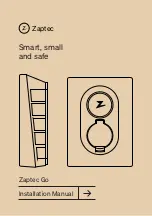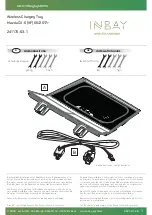
•
Do not apply the trailer brakes for extended periods of time as they
can overheat and lose effectiveness.
•
The trailer brakes (including the shoes, drum and trailer brake
magnets) must be inspected and serviced at intervals specified by the
manufacturer.
•
Electric brakes also require periodic adjustment to keep the shoes
properly spaced. If the brakes get hot when driving or if they will not
hold, chances are that they need adjustment.
Backing-up
•
Practice backing-up, particularly if you are a novice. Turn the steering
wheel to the right to move the trailer’s rear end to the right.
•
Sharp steering movements may cause the trailer to jackknife or go out
of control.
Tires
•
Select tires that meet the trailer loading requirements.
•
All trailer tires should be of the same size, and construction.
•
Always check tow vehicle and trailer tire pressure before towing.
Launching or retrieving a boat
Disconnect the wiring to the trailer before backing the trailer
into the water. Reconnect the wiring to the trailer after the
trailer is removed from the water.
When backing down a ramp during boat launching or retrieval:
•
Do not allow the static water level to rise above the bottom edge of
the rear bumper.
•
Do not allow waves to break higher than 6 in (15 cm) above the
bottom edge of the rear bumper.
Exceeding these limits may allow water to enter vehicle components:
•
Causing internal damage to the components.
•
Affecting driveability, emissions and reliability.
Replace the rear axle lubricant any time the axle has been submerged in
water. Rear axle lubricant quantities are not to be checked or changed
unless a leak is suspected or repair required.
Tires, Wheels and Loading
266
2012 F-250/350/450/550
(f23)
Owners Guide, 1st Printing
USA
(fus)
















































